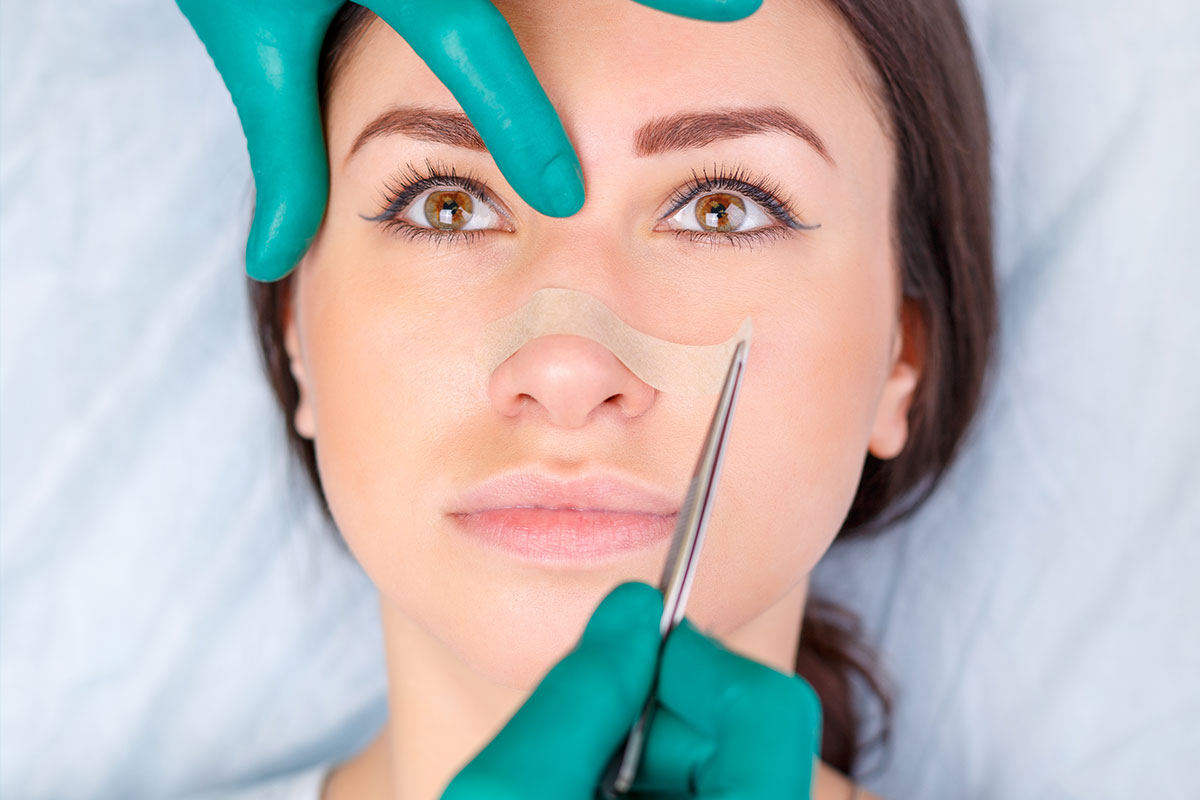Non-surgical rhinoplasty surgery in riyadh, while highly appealing for its convenience and quick results, is a medical procedure that carries potential risks. In Riyadh, as with any global aesthetic hub, ensuring safety is paramount. Patients considering non-surgical nose reshaping must prioritize careful research and choose a qualified practitioner to minimize complications.

Understanding the Risks
While less invasive than traditional surgery, non-surgical rhinoplasty is not entirely without risk. The nose is a complex area with a rich blood supply, and improper injection techniques can lead to serious complications.
- Vascular Occlusion (Most Serious Risk): This is the most feared complication and occurs when filler is inadvertently injected into a blood vessel, blocking blood flow.
- Consequences: If untreated, this can lead to skin necrosis (tissue death) in the affected area, which may appear as discolored patches (white, purple, or mottled skin) that become painful or ulcerate.
- Extreme Cases: In extremely rare but devastating cases, filler can travel to vessels supplying the eye, potentially leading to permanent blindness. This emphasizes the critical importance of anatomical knowledge.
- Infection: Although sterile techniques are used, any injection carries a small risk of infection at the injection site.
- Allergic Reactions: While rare, some individuals may have an allergic reaction to components of the dermal filler.
- Bruising and Swelling: These are common and usually temporary side effects. Bruising can last for several days to a week, and swelling may take a few days to fully subside.
- Nodules or Lumps: If the filler is not injected smoothly or if too much is used, it can result in palpable or visible lumps under the skin.
- Asymmetry: Uneven injection or unpredictable swelling can lead to temporary or persistent asymmetry.
- Migration of Filler: Though uncommon with modern, cohesive fillers, filler can, in rare instances, migrate from the injection site to adjacent areas.
- Skin Discoloration: Persistent redness or hyperpigmentation at the injection site is a rare but possible side effect.
Key Safety Considerations in Riyadh
To mitigate these risks, individuals in Riyadh considering non-surgical rhinoplasty must be vigilant in their choice of practitioner and clinic.
- Choose a Qualified and Experienced Practitioner: This is the most crucial safety factor.
- Medical Background: The injector should be a board-certified plastic surgeon or a dermatologist. These medical professionals have extensive training in facial anatomy, sterile techniques, and managing complications.
- Specific Experience: Inquire about their specific experience with non-surgical rhinoplasty. This procedure is advanced and requires a nuanced understanding of nasal contours and vascular supply. Ask to see their before-and-after photos of similar cases.
- Knowledge of Anatomy: A deep understanding of the facial vascular network, particularly around the nose, is vital to avoid injecting into critical blood vessels.
- Verify Clinic Reputation and Accreditation:Reputable Clinics: Opt for well-established clinics in Riyadh known for their high standards of patient care and safety protocols. Clinics that prioritize patient safety will maintain strict hygiene standards and have emergency protocols in place.
- Accreditation: Check if the clinic is accredited by relevant health authorities in Saudi Arabia. This ensures they meet certain quality and safety benchmarks.
- Type of Filler Used:Hyaluronic Acid (HA) Fillers: Insist on hyaluronic acid-based fillers (e.g., Juvederm, Restylane, Teosyal). These are generally considered the safest because they are biocompatible and, critically, reversible with an enzyme called hyaluronidase. If a vascular occlusion occurs, immediate injection of hyaluronidase can dissolve the filler and restore blood flow.
- Avoid Permanent Fillers: Be wary of practitioners offering permanent or semi-permanent fillers for the nose. While they offer lasting results, their risks are significantly higher, and complications are much more challenging, if not impossible, to reverse.
- Comprehensive Consultation:A thorough consultation should involve a detailed discussion of your medical history, including any allergies or previous reactions to injectables.
- The practitioner should explain the procedure in detail, outline all potential risks and side effects, and discuss how complications would be managed.
- They should also set realistic expectations about what the procedure can and cannot achieve.
- Sterile Environment and Practices:Ensure the clinic maintains a clean, sterile environment. All needles and syringes should be single-use and disposable.
- The practitioner should wear gloves throughout the procedure.
- Post-Procedure Care and Follow-up:Follow all post-care instructions meticulously. This typically includes avoiding touching or rubbing the treated area, strenuous exercise, alcohol, and certain medications (like blood thinners) for a specified period.
- Understand when and why you should contact the clinic immediately if you experience unusual pain, significant discoloration, or signs of infection.
- Attend all scheduled follow-up appointments to allow the practitioner to monitor your healing process.
In Riyadh, the popularity of non-surgical rhinoplasty is evident, with many clinics offering this treatment. While it provides an appealing alternative to surgery, prioritizing safety by choosing a highly qualified and experienced practitioner and a reputable clinic is crucial to minimize risks and ensure a positive outcome. Do not hesitate to ask detailed questions about the practitioner's qualifications, the fillers used, and the clinic's safety protocols. Your safety should always be the top priority.




Comments